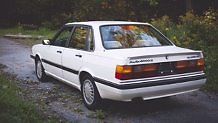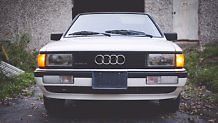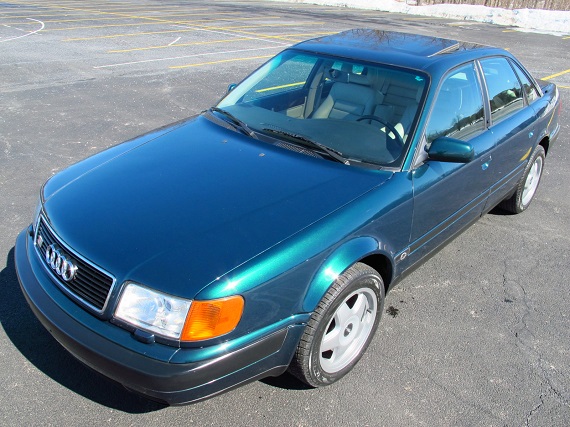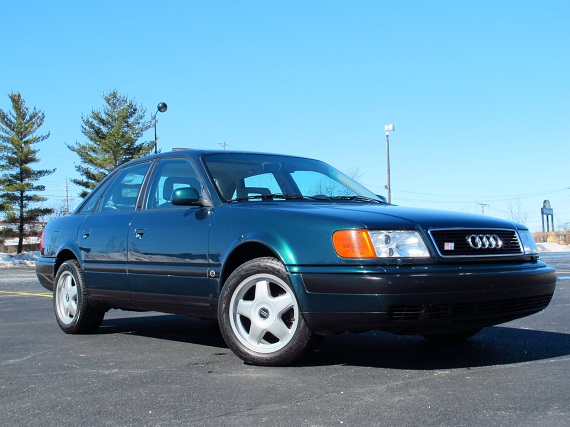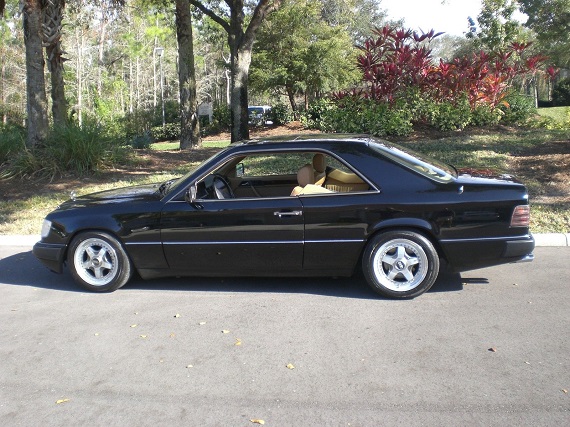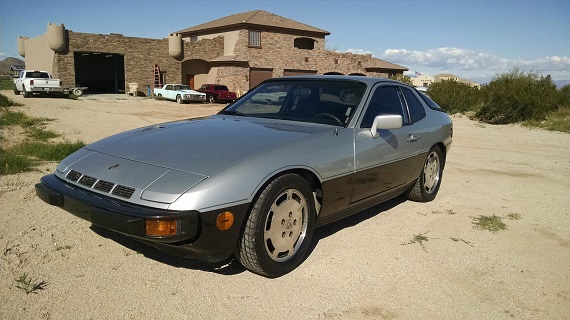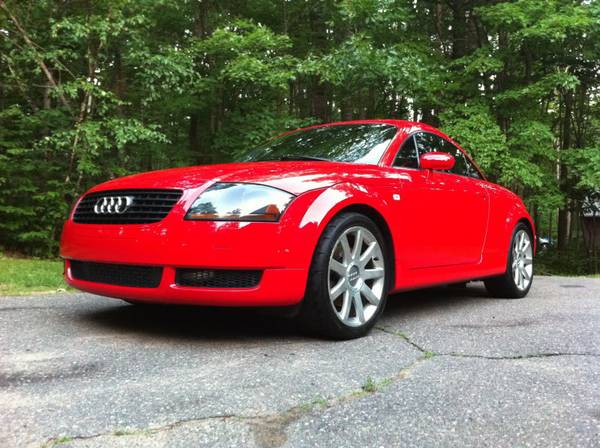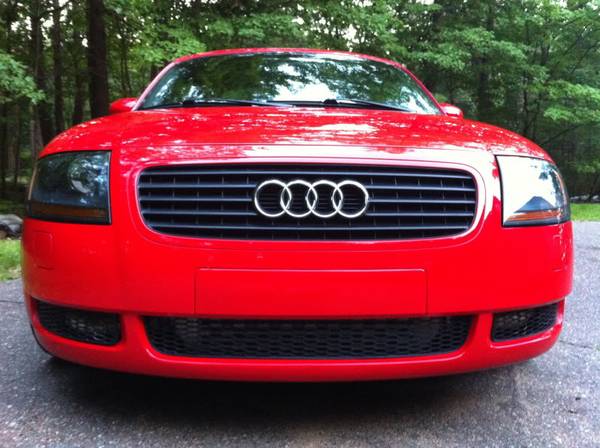I had a serious amount of nostalgia when I came across this listing; if finding 1980s Audis has become somewhat rare these days, finding ones in good nick has become even more so. But in this case the nostalgia stems from this particular model in this particular configuration; an Alpine White with Brazil Brown sport cloth 1985 4000S quattro. The reason why is that it’s about as close to the first car I owned as you can come. I had this car in this configuration, but a 1986 “CS” model. Outside of the “C” on the rear, the only other change was the addition of the third brake light at the base of the rear window. I didn’t start out looking for an Audi at all, and to be honest when I was 18 the B2 was virtually unknown to me. I tried – and failed – to buy a decent 2002 tii; an exercise that ultimately led a car-selling friend of my father’s to take me under his wing. He claimed he’d find the perfect car for me, and shortly thereafter I found myself paying for a 4000CS quattro without any real knowledge of it. It had about the same mileage as the car shown here, and generally was in good shape. Over the next few years, it would carry me on many adventures; long highway cruises to see friends, trips to the mountains to ski, my first track event, countless drives sideways through the snow – it became as much as friend as a vehicle. Despite that, the day came when I had to move on; owning both a Coupe GT and the 4000, I chose the former as the car to keep and the 4000CS quattro drove away. I’ve often dreamed of finding another in the shape mine left me in. And though it requires quite a bit of squinting due to the unreasonably small photos in this listing, I think this car just about fits the mold:
Category: Audi
They say lightning doesn’t strike twice, but we know that to be a fallacy. It’s just extremely unlikely for it to strike twice in the same spot – an improbability along the lines of finding two extraordinarily clean, original and unmolested Audi S4s from the same seller. Heck, let’s increase the probability slightly and remove the “same seller” part – it’s still quite unlikely to find two clean S4s for sale within a few weeks of each other. That’s not because the S4 is unloved – quite the opposite indeed, the S4 has remained one of the absolute Audi essentials for a large number of the four ringed fans. First, there was the aerodynamic C4 chassis; quiet, refined, luxurious and not at all ostentatious, it’s a good looking sedan that was arguably far ahead of its time compared to the competition from Germany in 1992. The S4 took that basic platform a step farther with subtle but certain fender flares covering one of the best looking wheels ever fit to an Audi, the Fuchs made 16″ x 8″ with meaty 225 section tires. The headlights were upgraded to projector-beam units with integrated fog lights, a change that would carry over to the A6 later. Inside the S4 also received a smart sport interior; the seats were a step up from the older sport seats and featured heavy bolsters and plenty of electric adjustability. But the true genius of the C4 lay at its heart where few saw; a stout all-wheel drive system featuring a Torsen center differential and electronically locking rear differential, the C4 was the next in a long line of over-built Audis. The engine also wasn’t entirely new, but it was understressed from the factory and subsequent years of boosted bliss later, the AAN engine is capable of not only stratospheric power levels but improbable longevity as well. There are many that argue that this was the best all-around Audi ever made and for good reason. Despite that, as we’ve seen, it remains likely the best performance value of any German marque – if you can find a good one:
CLICK FOR DETAILS: 1994 Audi S4 on craigslist
6 CommentsYou could be forgiven for thinking that the VAG 1.8 liter turbocharged motor was the go-to motor for the company in the late ’90s and early 00s. It appeared nearly everywhere in the U.S.; the Golf, Jetta, GTi, GLi, Passat, Beetle, Audi A4 and Audi TT all received the forced-induction unit. And that was just in the U.S.; go to Europe, and you’d find many more models and even other companies with the venerable motor. You’d also be forgiven for thinking they were all the same – however, a pause for thought would tell you they couldn’t be. First off, there were the drive train configurations; the Golf-based variants have their engines mounted horizontally, while the Audi A4-based cars have them longitudinally. Then there is the output that was available from the factory; the 1.8T started with 150 horsepower and ended with 240 horsepower in the highest output TTs. Immediately, you’d think they had just turned up the boost, but in fact there were a host of changes to the 225 horsepower motors to help sustain the increased pressure. There are, in fact, no less than 13 distinct versions of the 1.8T from that generation. All shared the same basic structure; cast iron block, 20 valve head with a single turbocharger; but details including injection, computers and engine management and breather systems vary in between each of the models. The Audi TT was the only one to offer various engine outputs though; available in either 180 horsepower or 225 horsepower versions, the later of which was pared with a 6-speed manual and Haldex viscous-coupling all-wheel drive. Though heavy, they were nonetheless sprightly thanks to the turbocharged mill. I’ve said for some time now that I think these will eventually be more collectable as they were an important part of the development of the company, yet few remain in good shape. Were I going to get one, I’d opt for one of the 2002 special edition coupes; the ALMS edition, launched to celebrate the American Le Mans Series victory by Audi’s R8 race car. Available in two colors, Misano Red with Silver Nappa leather or Avus Silver Pearl with Brilliant Red Nappa leather, they were mostly an appearance package but also received special 18″ “Celebration†alloys and were limited to 500 examples:
CLICK FOR DETAILS: 2002 Audi TT quattro 225 ALMS on Craigslist
4 Comments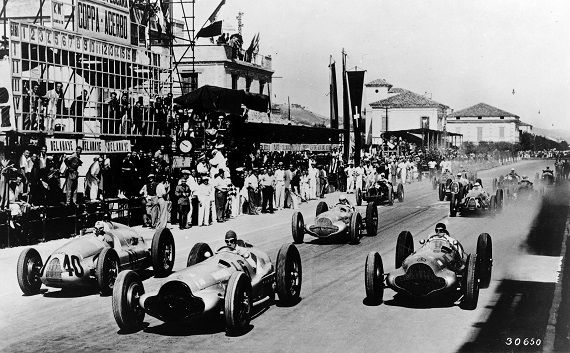
1938 Coppa Acerbo – Mercedes-Benz W154s and Auto Union Type Ds leave the starting line
We’re going to run something a bit special over the coming few weeks; a bit of a history lesson. In light of the 2014 championship for Mercedes-Benz in Formula 1, I wanted to revisit some research I did in 2003-2004 as part of a Master’s program at the University of Cambridge. We take it for granted that large corporate sponsors and major automobile manufacturers engage in motorsports as a natural outlet and expression of their engineering prowess in order to help sell brand identity, brand loyalty and ultimately sell more cars, trucks and motorcycles. Yet, there was a period where this was not a certainty – indeed, in the early 1920s it was still presumed that racing was an endeavor only rich gentlemen partook in, much like horse racing. But the combination of two companies competing against each other, a government eager to tout the superiority of its products, and new technologies all combined in a very special period during the early 1930s. The reign of the Silver Arrows was only halted by the outbreak of war, yet during that period of roughly 6 years we saw some of the fastest, most powerful and most exotic designs be innovated by the two German marques that the world has ever witnessed. The Mercedes-Benz W125 would remain the most powerful Grand Prix car for 50 years, until the 1980s turbo era, and properly streamlined, they still hold closed-course records in Germany at 270 m.p.h. on the public Autobahn. The spectacle held not only Germans attention, but all of Europe looked on as these two Goliaths tried to outsmart and outspend each other. Ultimately, they went to extremes to prove their dominance and win the favor of the German people – but more importantly, the German government, who by the late 1930s increasingly held the purse strings to valuable commodities needed for the production of automobiles. The following tells the tale of how the two German marques became involved in Grand Prix racing, how successful each was, and problems and challenges they faced along the way. It’s told from more of an economic standpoint, to help to explain why the two firms would race Grand Prix cars when neither offered a sports car for sale to the public. For the purposes of this blog, I’ve removed the citations and many of the quotations (most of which are in original German) as this is already quite long. I hope you all enjoy it, and if you have any specific questions please leave comments and I’ll do my best to answer them! Without further ado…
6 Comments